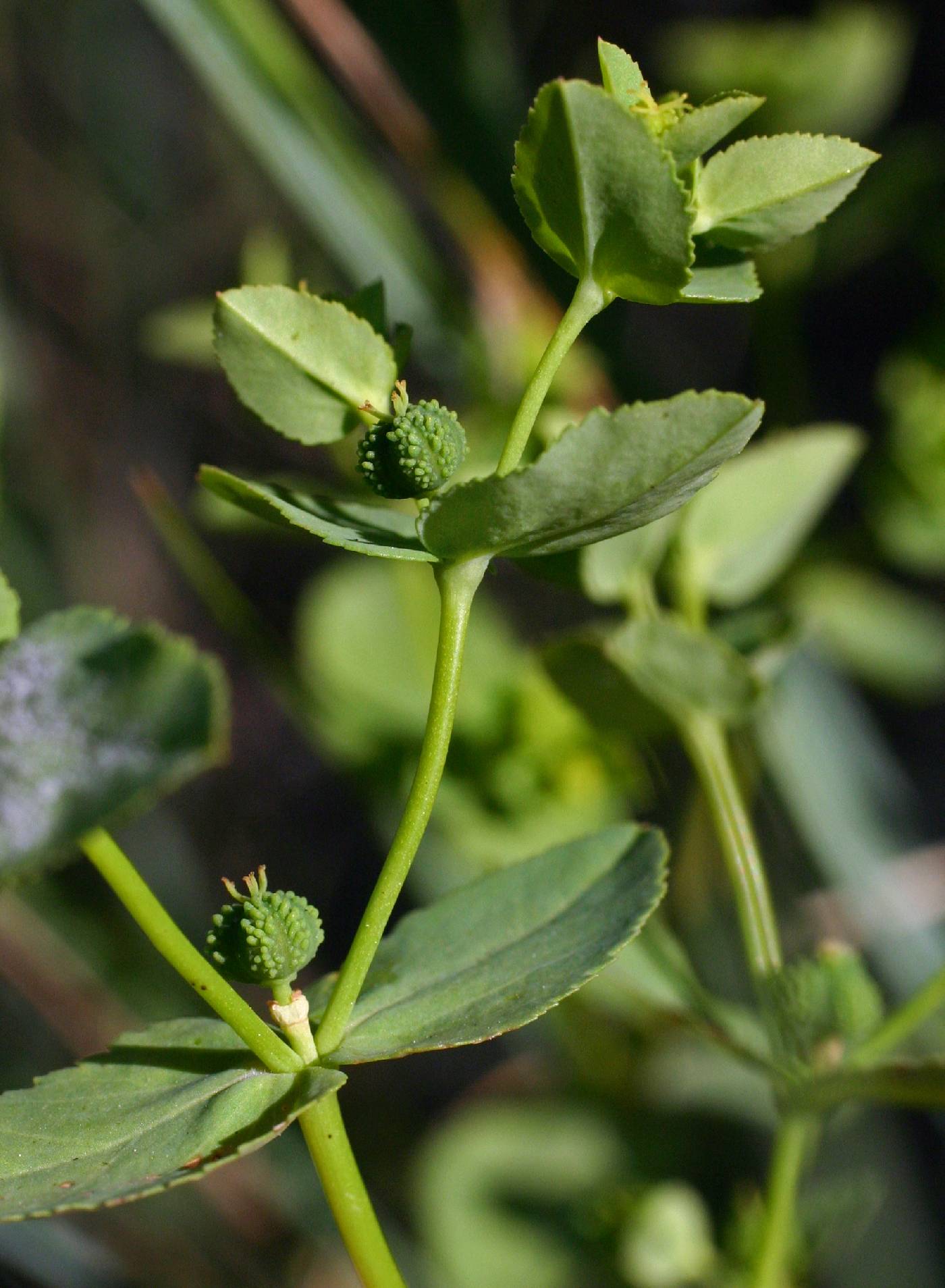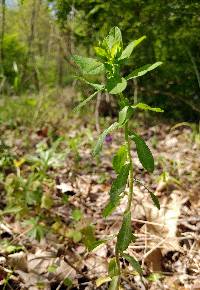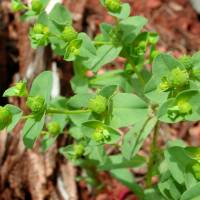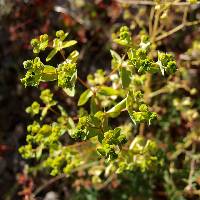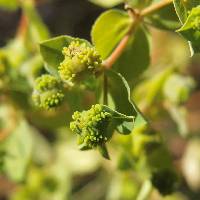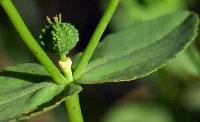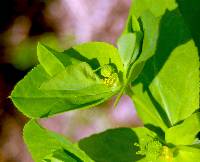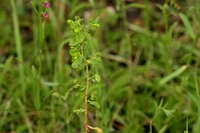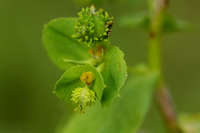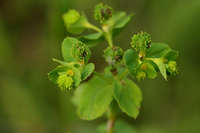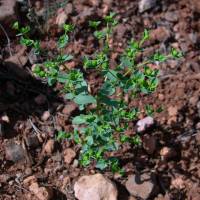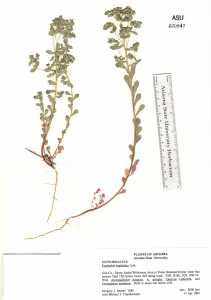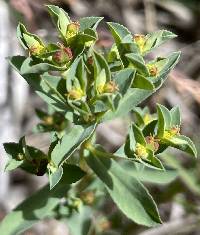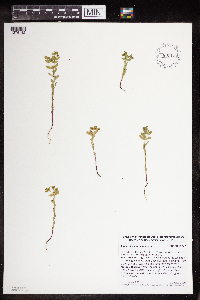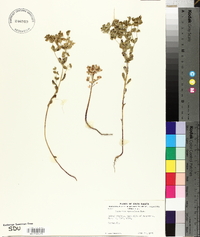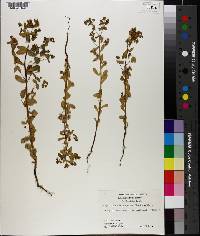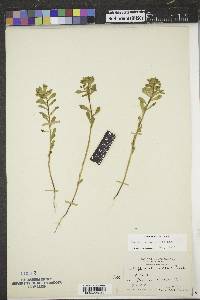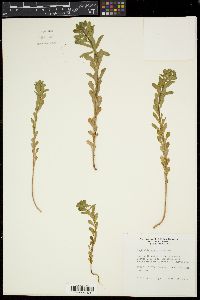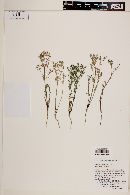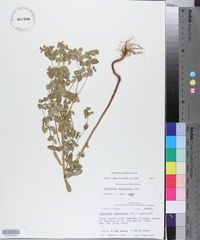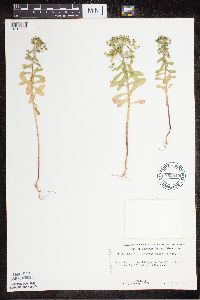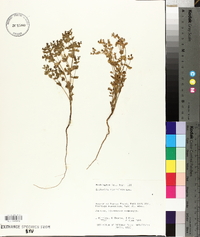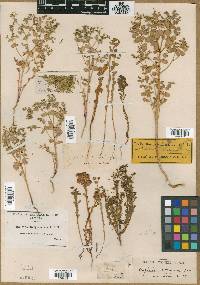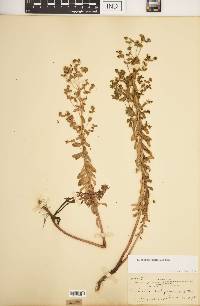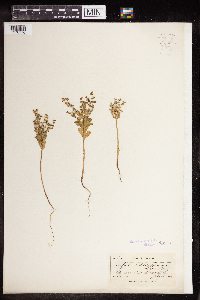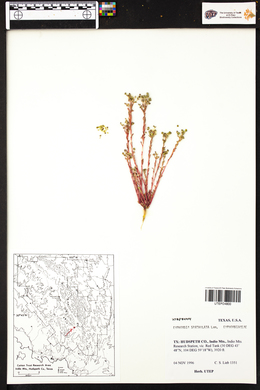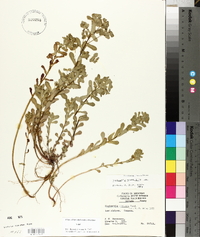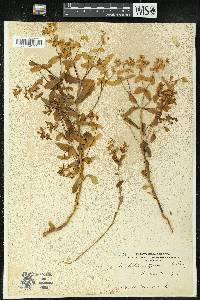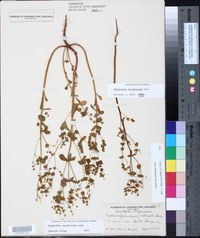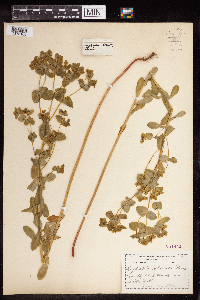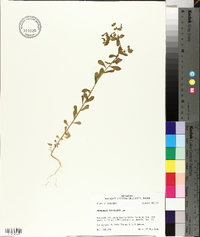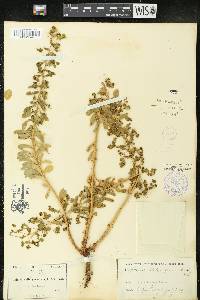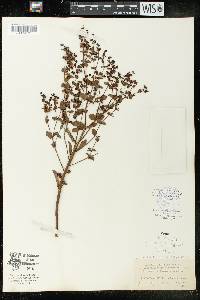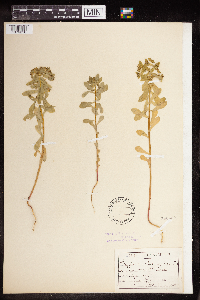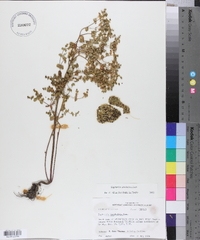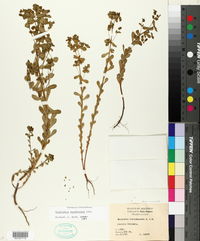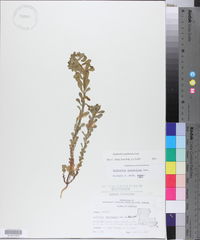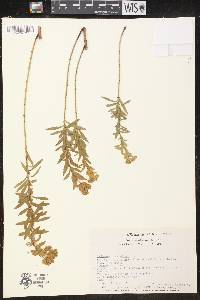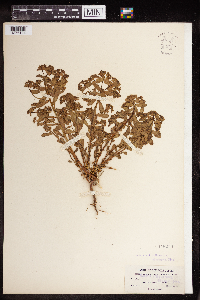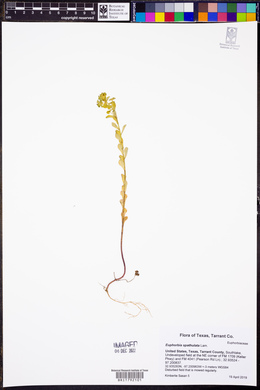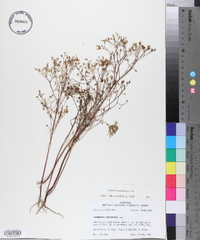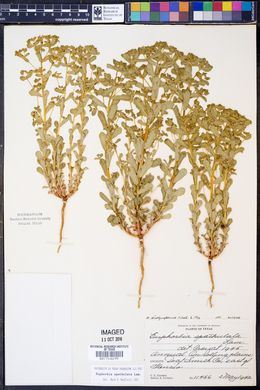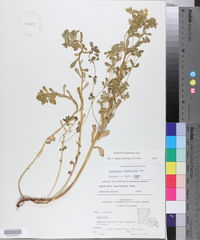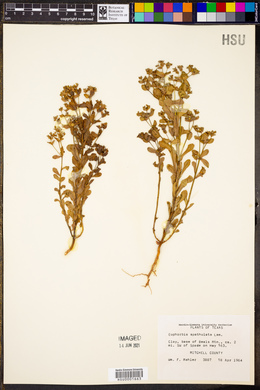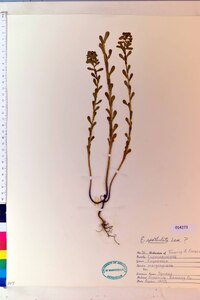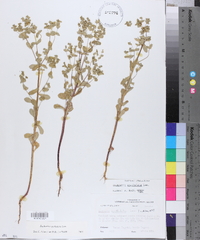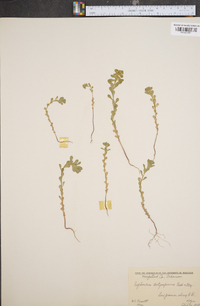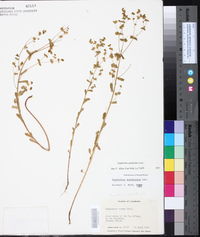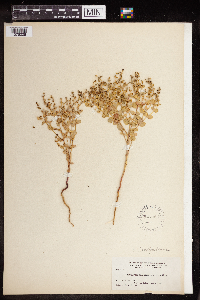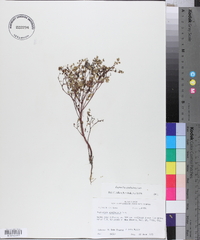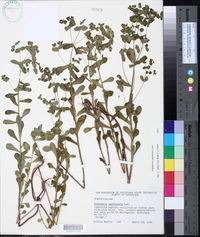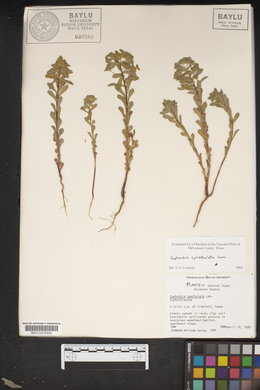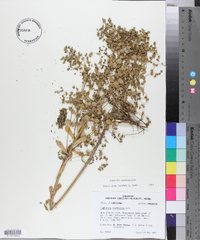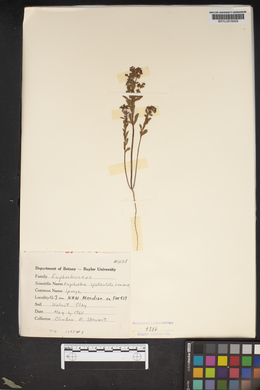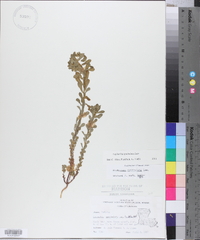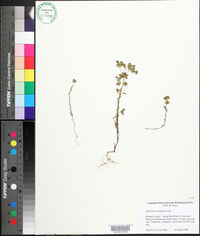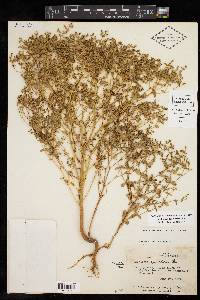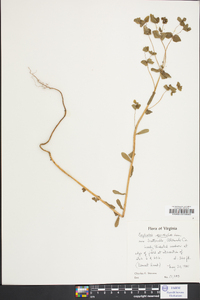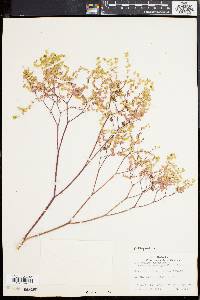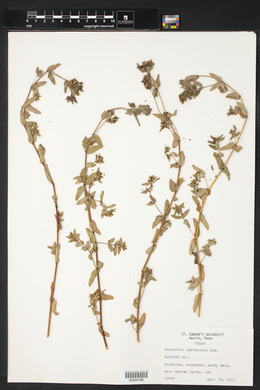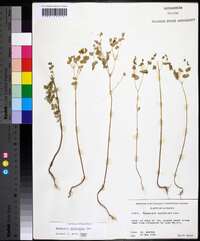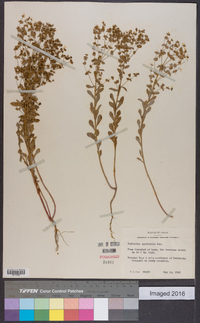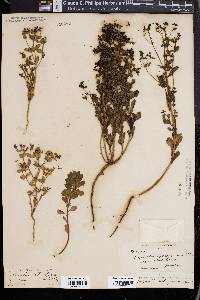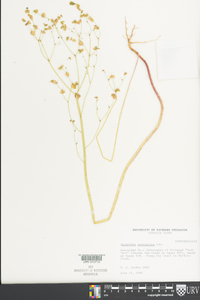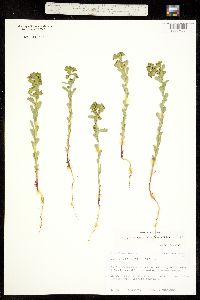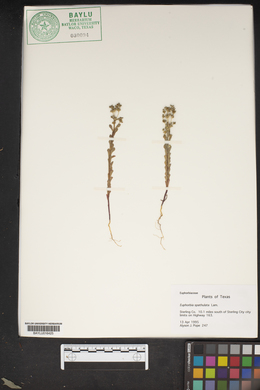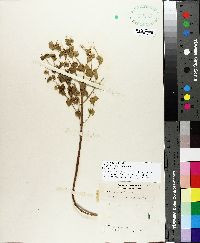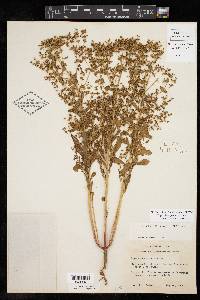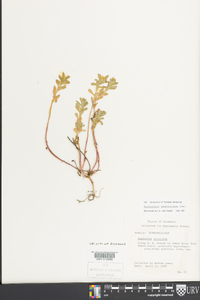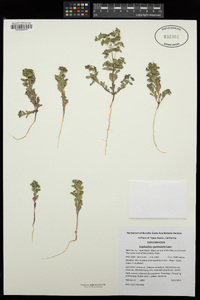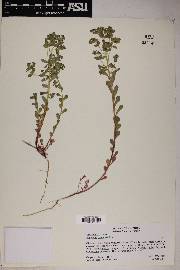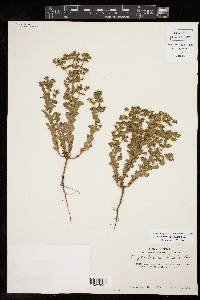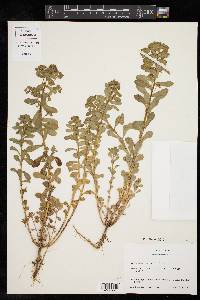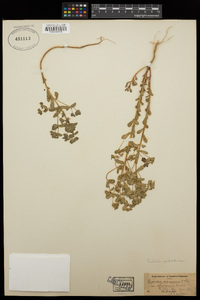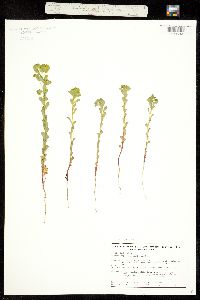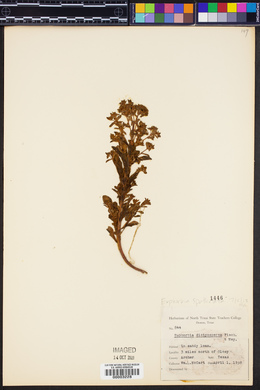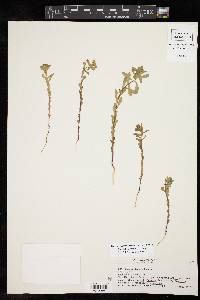Euphorbia spathulata
|
|
|
|
Family: Euphorbiaceae
Warty Spurge, more...giant spurge, roughpod spurge
[Euphorbia alta J.B.S. Norton, moreEuphorbia arkansana Engelm. & A. Gray, Euphorbia arkansana var. atrosemina Norton, Euphorbia arkansana var. coloradensis Norton, Euphorbia arkansana var. missouriensis Norton, Euphorbia dictyosperma Fisch. & C.A. Mey., Euphorbia dictyosperma var. mexicana Engelm. in Torr., Euphorbia mexicana (Engelm.) Norton, Euphorbia missouriensis (Norton) Small, Euphorbia obtusata Pursh, Galarhoeus arkansanus (Engelm. & A. Gray) Small ex Rydb., Galarhoeus obtusatus (Pursh) Small, Tithymalus arkansanus (Engelm. & A. Gray) Klotzsch & Garcke, Tithymalus mexicanus (Engelm.) Wooton & Standl., Tithymalus missouriensis (J.B.S. Norton) Small, Tithymalus obtusatus (Pursh) Klotzsch & Garcke, Tithymalus spathulatus (Lam.) W.A. Weber, Xamesike deltifolia Raf.] |
Glabrous annual, 1-6 dm, often branched from the base; cauline lvs oblong-spatulate, 1-4 cm, obtuse, finely serrulate, the upper truncate or even subcordate at the sessile base; lvs subtending the umbel similar; lvs of the umbel shorter and relatively wider, broadly oblong to ovate or deltoid- ovate; rays of the primary umbel commonly 3, repeatedly dichotomous; involucre delicate, 0.8 mm; ovary and fr beset with numerous conic to cylindric processes, the fr 2.5 mm; seeds thick-lenticular, 1.5-1.8 mm, marked with a reticulum of fine, sharp, low ridges. Prairies, barrens, and rocky hills; Minn. and Mo. to Mont. and Tex., w. to the Pacific. May, June. (E. dictyosperma; Tithymalus arkansanus; T. missouriensis; Galarhoeus a.; G. m.) Gleason, Henry A. & Cronquist, Arthur J. 1991. Manual of vascular plants of northeastern United States and adjacent Canada. lxxv + 910 pp. ©The New York Botanical Garden. All rights reserved. Used by permission. Glabrous annual, 2-7 dm, simple to the umbel or with a few lateral branches; cauline lvs oblong-oblanceolate, 1.5-4 cm, very obtuse, finely serrulate, subcordate and somewhat clasping at the sessile base; lvs subtending the primary umbel shorter and broader, those of the umbel broadly ovate; rays of the primary umbel usually 3; involucres 1.5 mm, strictly glabrous outside; styles separate to the base, each bifid a third to half its length; fr 3-3.5 mm, verrucose; seeds thickly lenticular, 2-2.5 mm and nearly as wide, smooth or obscurely reticulate. Woods; Pa. to Ind. and Io., s. to S.C. and Tex. Apr., May. (Tithymalus o.; Galarhoeus o.) Gleason, Henry A. & Cronquist, Arthur J. 1991. Manual of vascular plants of northeastern United States and adjacent Canada. lxxv + 910 pp. ©The New York Botanical Garden. All rights reserved. Used by permission. Kearney and Peebles 1969, McDougall 1973 Duration: Annual Nativity: Native Lifeform: Forb/Herb General: Glabrous annual to 45 cm tall, simply branching to just below the inflorescence, stems deep red to green. Leaves: Alternate, oblong to spatulate, to 4 cm long, margins serrulate, sometimes red-tinged, especially near the tips, sessile or borne on short petioles, leaves which subtend the inflorescence opposite, elliptic to ovate, sessile, with crenulate margins, forming a cup around the inflorescence, these sometimes lighter in color than the surrounding leaves. Flowers: Inflorescences borne in forked rays, 3-rayed or born on several short branches with 1 or more cyathia, involucres campanulate, to 1 mm long, glands yellow, oval, without appendages, not concealed. Fruits: Globose capsules to 3 mm long, warty, with warty brown or black seeds to 1.5 mm long. Ecology: Found on plains and hills from 3,500-7,500 ft (1067-2286 m); flowers March-April. Notes: Distinguishing characters for this species are the yellow involucre glands without appendages and the warty capsules. Ethnobotany: Specific use of the species is unknown, but the genus was used as an infusion to treat diabetes, mouth, and skin sores, and as a bath to treat fevers, chickenpox, smallpox, and gonorrhea. In infusion of the roots was taken to invoke diarrhea. Etymology: Euphorbia is named for Euphorbus, Greek physician of Juba II, King of Mauretania, while spathulata means shaped like a spatula. Synonyms: Many, see Tropicos Editor: LCrumbacher, 2011 From Flora of Indiana (1940) by Charles C. Deam I have this species from the dry, wooded bank of the St. Mary River south of Fort Wayne, from along the Wabash River east of Bluffton, and from the roadside on the south side of Half Moon Pond about 10 miles southwest of Mount Vernon, Posey County. Madge McKee collected it in Newton County. It was collected in Tippecanoe County by Young and the specimen is in the herbarium of Indiana University. ...... Indiana Coefficient of Conservatism: C = 3 Wetland Indicator Status: FACU |
|
|
|

